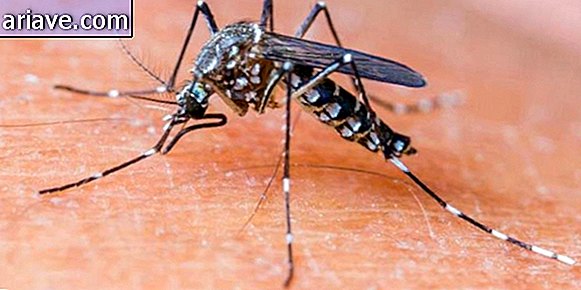These 3 Earth-sized planets can be habitable.
Scientists are even keen to find a new world with potential for harboring life, and this search has even led to the detection of numerous interesting exoplanets. For, according to Ali Sundermier of the Business Insider portal, an international team of astronomers recently announced the discovery of a trio of candidates that could apparently be home to alien life forms.
According to Ali, the exoplanets are in orbit around a star in the constellation Aquarius, a mere 40 light years from Earth. The three were classified as potentially habitable by astronomers and, as they explained, if we want to find extraterrestrial creatures across the universe, these locations would be excellent starting points.

After all, because these small solar systems are so close to ours, the technology needed to detect life forms - if any - is already available.
Little star
The astronomers' team - from 16 different countries - found the planets through observations made with the Transiting Planets and Planetesimals Small Telescope (TRAPPIST) space telescope, designed specifically for observing dwarf stars near the planet. Solar system.

The planets are in orbit around an ultra-cool red dwarf called 2MASS J23062928-0502285 - which is about half the temperature of our Sun, about 2, 000 times brighter and just slightly higher than Jupiter. The worlds were discovered when astronomers realized that the star's brightness was periodically reduced, indicating that there were celestial bodies circling around it.
Promising Candidates
According to scientists, of the three planets, astronomers believe that the third, which is furthest from the star, may be within the habitable zone. The other two, because of their proximity to the red dwarf, probably have synchronized rotation, which means they always have the same face facing their star - just as the same "side" of the moon always faces the land.

Thus, while one hemisphere is constantly exposed to heat and therefore has potentially scorching temperatures on its surface, the other remains all the time in the dark and is probably freezing.
However, astronomers estimate that even then planets may have regions where temperatures are below 127 ° C - which is ideal for water in its liquid form to exist and thereby life. Moreover, if they have atmosphere or perhaps oceans, then there is a possibility that the heat they receive from the star will be better distributed, giving rise to regions conducive to the existence of life.

For now, no sign that the planets actually harbor life forms has been detected yet, but the team will continue to conduct observations to confirm habitability and see what else they discover about the three worlds.
***
How long do you think it will take scientists to find alien life forms on other planets? Comment on the Mega Curious Forum











